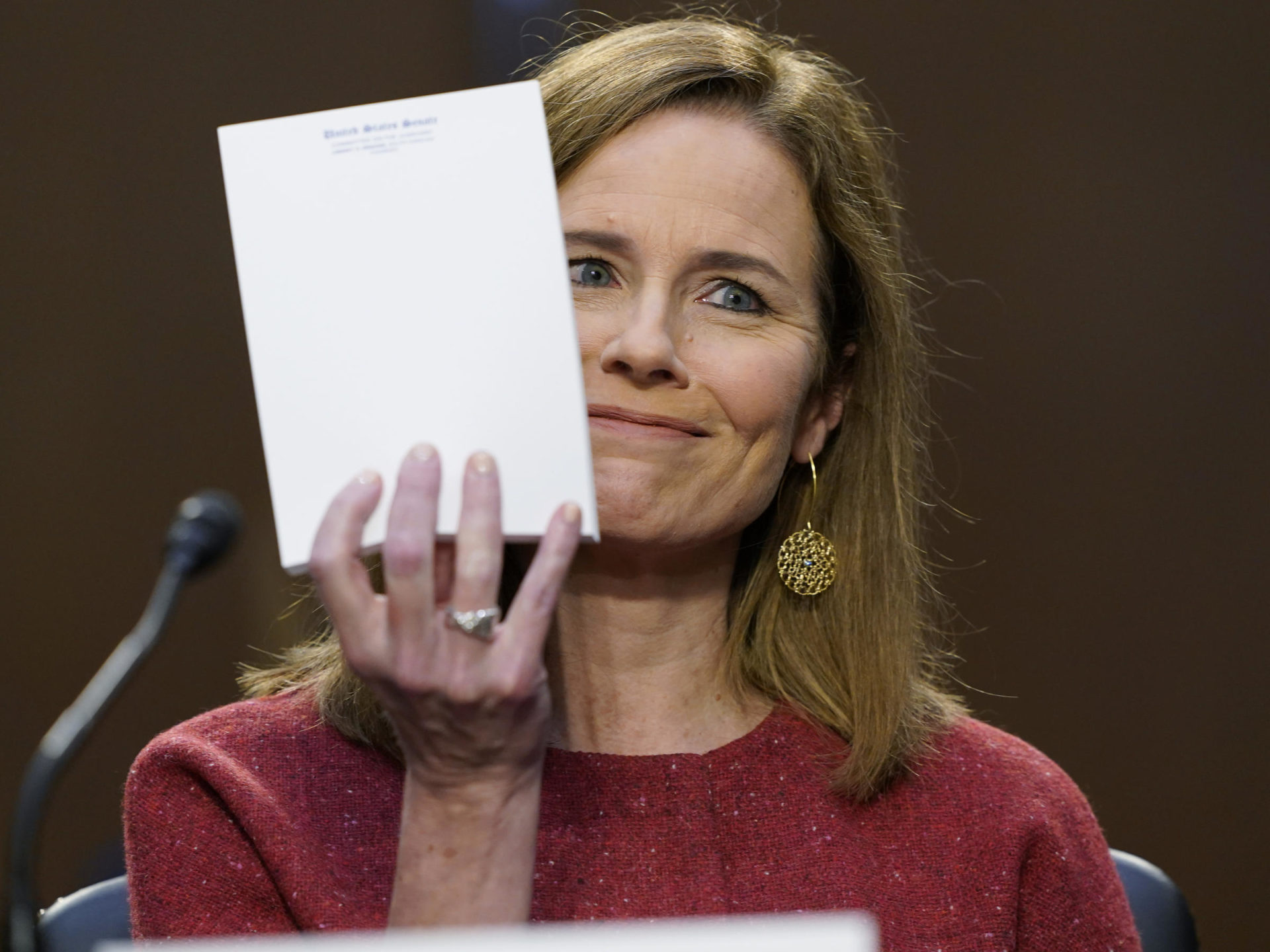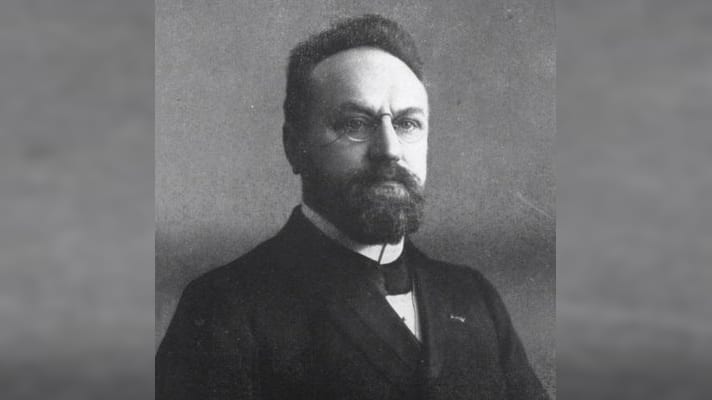Should I Preach Without Notes?

At one point during her confirmation hearing, Amy Coney Barrett held up a blank notepad to show to the Senate Judiciary Committee all the notes she had taken with her to the world’s most stressful job interview. In the wake of this impressive feat, I noticed someone online posed a challenge to pastors that went something like this: Hey pastors, if she can talk for hours with nothing but a blank pad of paper, why can’t you preach without notes?
Immediately, I thought of several replies. (1) She was answering questions, not giving a lecture. (2) She probably didn’t want to be bogged down rifling through material when she needed to maintain eye contact and pay attention to the speaker. (3) She was being asked about material she had already taught, studied, or written about. (4) She’s super-duper smart.
But let’s set aside the unique spectacle that is a Senate confirmation hearing and think more directly about preaching.
There are three typical ways a preacher might preach: with a manuscript, with no notes, with some notes. Each approach has advantages and disadvantages.
Manuscript
Most of the well-known pastors I know preach from a full manuscript. I’ve often had the experience of speaking at a conference, and the organizer will say, “By the way, we are going to turn these messages into a book, so after you speak send me your manuscript.” More than once, I’ve been the only one who says, “Uh, I don’t use a manuscript, and it’s going to take a lot of work for me to turn my personal notes into something that can be published.”
The advantages to preaching from a full manuscript are many. You are able to plan for the well-placed rhetorical punch. You can enter the pulpit feeling more confident and less stressed about losing your way. After the message is spoken, you can share the sermon more easily in print—whether in a book, on your blog, on your church’s website. Most importantly, writing out a manuscript promotes greater clarity, concision, and theological fidelity. I always have our pastoral interns preach from a full manuscript. Even if they lose something in delivery, I want to make sure the content is as strong as possible.
Of course, there are dangers to manuscript preaching as well. The biggest drawback is the potential lack of energy and eye contact. There is a skill (and art) to writing your sermon for the ear and then reading from a manuscript in a way that doesn’t feel stilted. David Platt and John Piper stick closely to their full manuscript, but no one would accuse either of lacking passion or authenticity.
For my part, I wrote out sermon manuscripts for a couple of years early in my ministry. I love having those sermons written out now because it’s much more useful to return to a manuscript than to an outline or scattered bullet points. But I’ve never felt as comfortable preaching from a full manuscript. I feel less engaged with the congregation and less dynamic. Maybe it doesn’t seem any different to the audience, but I don’t enjoy preaching as much when I’m reading from a page. I’m just not sure I have a knack for it.
Thankfully, manuscript preaching is not the only way to preach.
No Notes
I was taught by Haddon Robinson at Gordon-Conwell to preach without notes, and for the first few years in ministry I stuck mainly to this approach. If you’ve never preached without notes, it’s worth trying out for a few months. It may be scary at first, but give it 10 sermons and see what you think (and see what others think). Haddon was a master at preaching without notes. He had a prodigious memory and was a gifted storyteller. He was also incredibly disciplined at gathering memorable illustrations, something I’ve never been good at.
I should clarify that preaching without notes is not the same as impromptu preaching. We are not talking about preaching on the fly. We are talking about diligent study throughout the week, maybe even writing out your sermon in full, and then going into the pulpit with just your Bible and your brain. Maybe you memorized the sermon word for word (as many preachers used to), or, more likely, you have the main points tucked away and the rest is ready to come out from a week’s worth of thinking and praying. In any event, we are talking about working hard through the week so that you can walk the high wire without a net on Sunday.
The advantages and disadvantages of preaching without notes are what you might think. On the plus side, it keeps you relentlessly engaged with the congregation. Unless you and the audience are looking at your Bibles, you are looking at each other. There is freedom in preaching with nothing but a Bible in your hand.
Preaching without notes also forces you to simplify your message. It’s no coincidence that the proponent of Big Idea preaching was a big proponent of preaching without notes. Complicated sermons with quotations and footnotes and the intricacies of Hebrew grammar don’t lend themselves to preaching without notes. But if you have one big idea, with three supporting ideas, plus five illustrations along the way, you can pull it off, and often with good effect.
On the other hand, preaching without notes can lead to some bad habits. If you aren’t writing out a manuscript ahead of time, it can leave you pulling things together on the fly as you preach. I remember one well-known preacher telling me, a few years ago, that he was tired of hearing these pastors who seemed to be finishing their sermon prep in the pulpit. “Don’t test out your sermon on me,” he said. “Work out your transitions and know how you are going to land the plane before you get into the pulpit.” Cutting corners in preparation is a danger.
Making your sermon too basic and too general is another pitfall, as is homiletical meandering. No one wants to listen to 15 minutes of content stretched into a 40-minute message. Haddon Robinson made it look easy. He delivered all his class lectures without notes, and I never remember a wasted word. But most of us will end up wasting a LOT of words unless we really labor to preach effectively without notes.
For me, the time spent in memorization was the biggest drawback to preaching without notes. I’m pretty good at memorizing things, but after a couple of years of preaching without notes, I couldn’t justify the time spent on stuffing outlines into my short-term memory. Maybe I needed to stick with it longer, but once I started preaching every week, and then twice on Sunday, I couldn’t make the time to cram all the information in my head. I was spending hours on Saturday evening and Sunday morning just trying to make sure I remembered my three points and didn’t forget the important stuff I needed to say. After a while I thought, “Why not just bring a few notes into the pulpit and stop all this cramming?”
Some Notes
So I started out preaching without notes. Then I tried preaching from a manuscript. And now, for most of my ministry, I’ve preached from an outline. At first, it was quite a full outline—six pages or more. Then I went down to five pages. Now I try to make sure I don’t go past four. Sometimes it’s a little more than three pages. I usually write out my opening prayer, write out particularly important sentences or paragraphs, write out quotations, and write out my major points. The rest of the outline may consist of sentences, phrases, Scripture passages I want to turn to, or simple prompts reminding me to tell “the Krispy Kreme doughnut story.”
Preaching from an outline works for me. I don’t have to memorize everything, but I don’t have to be tied to a manuscript either. I can plan for a few rhetorical flourishes, while still maintaining eye contact. I have the road map in front of me without sacrificing the freedom to speak more or less extemporaneously. I think I sound more conversational and more passionate when I’m not reading a manuscript. At the very least, I feel more comfortable.
Don’t get me wrong, there are still downsides to my approach. I often fear that I go too long, that my transitions were wobbly, and that my content was not as crisp as it should have been. Sometimes I get into the pulpit and realize the points that seemed clear in my mind, and looked good on paper, sound awfully muddy coming out of my mouth. I also find that it’s harder to preach from an outlined sermon months or years later.
If I could find the time, I think my ideal would be to write out a full manuscript (for clarity and for posterity) and then whittle that down to a half-page of notes that I could tuck in my Bible. In general, I know that my preaching errs on the side of too much information, so simplifying almost always helps my messages.
Honest Limitations
Here’s the bottom line: Be honest about your own limitations, but don’t give up on an approach until you’ve tried it. See what works best for you and your context. Don’t let someone else’s style or method determine how you can best communicate God’s Word.
And if you are in a rut, why not try one of the other approaches for a month or two and see how it feels? There are certain “rules” to preaching. It’s not anything goes. But there is flexibility too. In whatever approach they use, preachers should work hard to grow in the skill of preaching. Ultimately, we need the Spirit to blow, but the gifts and labors of the preacher are usually the kindling he uses to light a spark.



